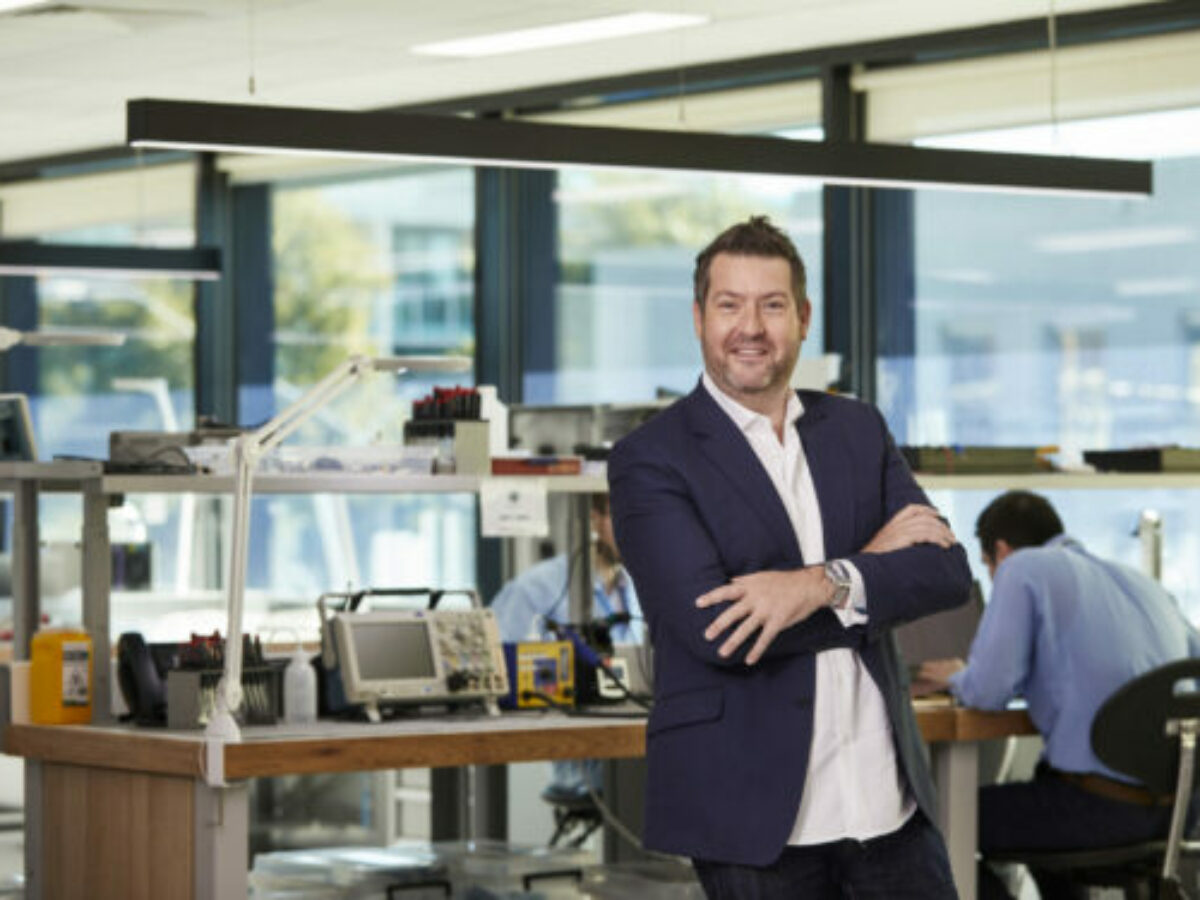Celebrating Australian sovereign capability: some thoughts on the importance of procurement

To begin the third week of our Celebrating Australian sovereign capability series, we hear about some ways government could help drive IP creation and commercial impact. Brent Balinski speaks to Grey Innovation founder Jefferson Harcourt
Governments have been poor at seeing the value of procurement and other measures that could make a real difference in delivering innovation, believes Jefferson Harcourt.
“We have a public service that is reticent to purchase things out of the Australian system… And that hasn’t changed, sadly,” he tells @AuManufacturing.
“There was a lot of talk about sovereign capability. I believe it’s there, but… we want to as a society unlock that power of government purchasing more.”
When we speak to Harcourt, the National Reconstruction Fund (NRF) Corporation Bill has just passed the lower house, and we ask his view on what the federal government should consider in diversifying the country’s manufacturing industry and establishing the fund’s mandate.
Three years ago Grey Innovation led a consortium of over 30 companies, mostly SMEs, to manufacture 2,000 Notus emergency ventilators for the national stockpile.
Selection of a design, made under license from Smiths Medical, was made based on input from clinicians, who advised a simple product with minimal electronics and software. Over 99 per cent of components were made locally.
Core business for Grey, however, is the establishment of new businesses, most of which begin their lives as research programs in the university system. These include explosives detection units and water quality monitors based on separation science breakthroughs out of the University of Tasmania.
All push and no pull
“Firstly I think the manufacturing capability in Australia has changed. I don’t know if I’d want to say it’s diminished,” says Harcourt.
“Certainly there are some incredible companies manufacturing very complicated things that we just don’t know about.”
So how do we create more of them, and – critically – help them scale? Harcourt believes one answer can be found in the Small Business Innovation Research program in the United States, introduced in 1982.
This dedicates a certain amount of the R&D budgets of federal agencies to supporting pre-commercial projects by small businesses (defined as under 500 employees) which address areas of concern. Phase I and Phase II provide grants of $US 250,000 and $US 750,000 for development costs, while Phase III is focussed on commercialisation.
“Industry will move forward, the government will then select one of them and put in a little bit of money, not a lot, but what they do is provide a purchase order and guidance to get you to the point where government will then buy the product you will develop and manufacture if it meets their requirement,” says Harcourt.
“And that’s the prize, and those purchase orders are very large. And you can take them to the bank, certainly raise capital off them. So government officiates and then purchases. Pretty simple. What we have here is it’s all push and no pull. A lot of talk about science, a lot of talk about innovation, but look at what happens with the NBN.”
Harcourt is emphatic on the importance of procurement to drive innovators, citing projects like Melbourne’s Myki integrating ticketing system.
“A handful of companies in Victoria could’ve nailed it, and it would’ve given them an opportunity to export some fantastic homegrown [technology.] What do we do once again? We go overseas,” he adds.
“If you were to… build a road or dig a trench and the entire workforce was a foreign workforce, you’d expect that to be on the news, and the unions jumping up and down, and it would just be unacceptable. But when it comes to the smart stuff, that’s exactly what we’re doing.”
Having the government as a customer would also provide a boost to any startup looking to win overseas customers.
Only having the government as a customer is probably not a good business case, but having it as a first customer is hugely helpful.
“Innovators like us travel around, [Grey Innovation Group company] GreyScan and others, and every country we talk to, every government, the first question is – quite naturally – ‘how many have you sold at home?’” he says.
“And we have to have the awkward conversation that ‘well, the Australian government doesn’t really do that. They buy other products first until we’re rock solid and completely proven in the market and then, maybe after ten years, we’ll be required.'”
It was a great journey
Harcourt began Grey Innovation in 1998, the year he graduated as an electrical engineer from Swinburne University.
He cites work for very early clients such as HP and Bosch as an excellent grounding in how large-scale production works, and the interplay between design, production, marketing and commercial activities.
Engineering services morphed into commercialisation, after the company developed expertise in raising capital and being able to provide more of a “turnkey solution” to the startups it assisted. Harcourt describes this as a “natural progression” for engineering development houses, citing IP Group.
Grey Innovation Group launched an ESVCLP fund – seeking $100 million in funding in 2021 – which it described as a “clarion call for sovereign capability in manufacturing”. This project is currently on hold due to changed sentiment in the investor community.
Harcourt relocated to Perth after the Notus project finished, and his current focus is on a venture growing “hyperscale” quantities of seaweed. (Check back later this week for a story on Canopy Blue.)
His reflections on Notus three years on?
“We built not just a ventilator, which is a class 2B medical device, but we built a whole company and a manufacturing operation, albeit a virtual one spread across some fantastic partners. But we had the first one rolling off the production line in four-and-a-half months from signing the licence, which is a crazy achievement,” says Harcourt.
“Look, it was a great story. It was a great journey, we built some good relationships and some of our partners, some of the suppliers we used have expanded their business to do more early-stage work, which is fantastic.
“And I think the government – the Victorian government – has made some steps to do more with local procurement. But we’d like to see that happen faster.”
Picture: supplied
Further reading
FEDERAL GOVERNMENT ANNOUNCES $31.3 MILLION PURCHASE OF AUSTRALIAN-MADE VENTILATORS
GREY INNOVATION CALLS FOR INVESTORS IN NEW VENTURE FUND
VENTILATOR PROJECT LEAD WANTS TO RECREATE ‘THE MODEL THAT CHANGED THE WORLD’
FROM BOMBS TO BUGS: AUSTRALIAN COMPANY WORKS TOWARDS NEW COVID DETECTION DEVICE
Topics Analysis and Commentary
@aumanufacturing Sections
Analysis and Commentary Awards Defence Manufacturing News Podcast Technology Videos










